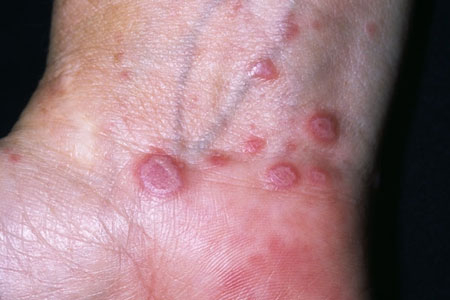Lichen planus is an idiopathic, chronic inflammatory autoimmune disease that affects the skin, mucous membranes, and nails. Most often, lichen planus affects the adult population, however, sometimes, this pathology is also found in pediatric practice.
And since hormones are usually used to treat lichen planus, the question arises – how to avoid their appointment to small patients. On estet-portal.com, read about the main safest remedies that are used to treat red flat lichen in children.
Peculiarities of treatment of lichen planus in children
Lichen planus in Western countries makes its debut on average at 30-60 years old, but in Asia it affects the population from 20. In India, this disease also occurs in children.
Globalization leads to the fact that a dermatologist anywhere in the world must be ready to competently provide assistance to a child with lichen planus without harming his health.
At this stage, the treatment of lichen planus in childhood is not standardized, but recent research may help the doctor choose the safest drug for treating this disease in a child.
Localization and features of the manifestation of lichen planus
Differences in the treatment of lichen planus in children
The main difficulty in the treatment of lichen planus in children is that corticosteroids are contraindicated for small patients. In this regard, doctors are looking for alternative ways to fight this disease, which would not have such pronounced side effects as hormonal drugs.
Among the drugs proposed for the treatment of lichen planus in children, the main ones are:
• dapson;
• metronidazole;
• Topical corticosteroids in combination with emollients.
For the most up-to-date articles, visit Facebook!
Systemic corticosteroids are also used in pediatric practice for the treatment of severe forms of the disease, however, side effects with their use are observed in almost 100% of cases.

Safe and effective drugs for the treatment of lichen planus in children
Recent studies indicate the effectiveness of dapsone in the treatment of lichen planus in children, and there were no side effects with the use of this drug. Since no antihistamines were prescribed during the period of treatment with dapsone, but there was a significant reduction in itching, the researchers concluded that dapsone has antipruritic properties.
Metronidazole was given to anemic patients who were contraindicated for dapsone. The exact mechanism of action of this drug in lichen planus is unknown, however, it is believed that the effectiveness of metronidazole is due to its immunomodulatory properties. This drug was effective in some patients with idiopathic lichen planus, but some children had to be switched to dapsone therapy.
Topical corticosteroids in combination with emollients have also been effective in the treatment of lichen planus in children, however, many patients soon relapsed when this therapy was discontinued.
Thus, dapsone and metronidazole can be used as alternative treatments for lichen planus in children. However, more research is needed to help standardize the dose and duration of therapy with these drugs.
Read also: Treatment of lichen planus of the mouth







Add a comment